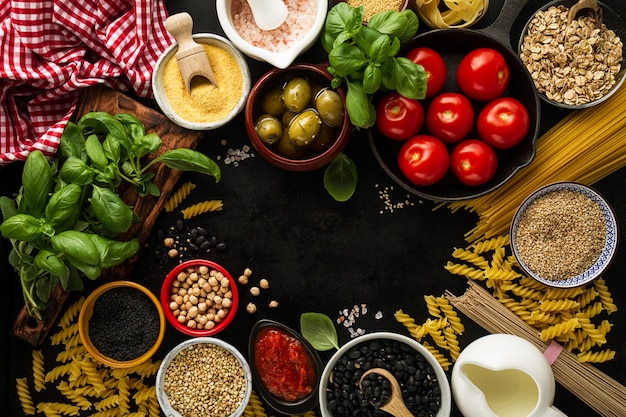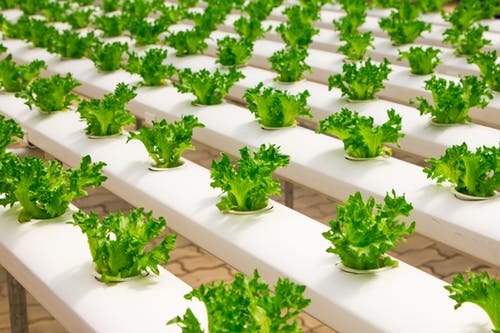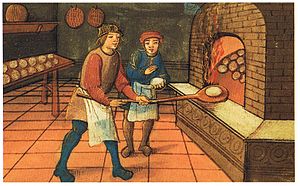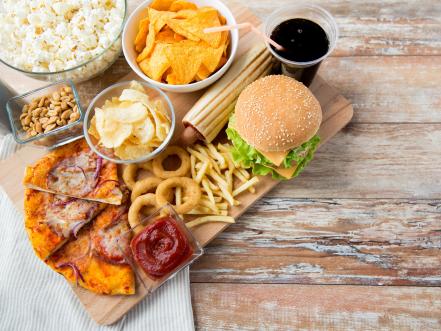Technology in food
When discussing the future of food technology we also speculate on ideas like flying cars, quantum technology, and interstellar travel. But of all the possibilities that lie in our future one of the few things we are certain of is that we'll still consume food in one way or the other way. Our current innovative food science and emerging technologies of food technology. It is global, diverse, and rapidly advancing. An example of this being the emerging acceptance of plant-based meat by the public these are slabs of protein made from ingredients which are derived from plants and designed specifically to have the taste texture color and aroma we recognize from regular animal-based meat.
 |
| Food Technology |
Just to follow a valid idea popularity a research firm recently showed data which suggested that growth in sales of plant-based meat burgers had increased by 10% While Noma beef burgers have basically stagnated this year this is only the beginning of the evolution of our edible future as the technology (Technology in Food) is said to be implemented will change just about everything that has to do with our food from what we eat to even how the food is consumed. Just as I said earlier every facet of food technology is said to evolve drastically in the coming years.
Food technology future
I will discuss a few ways this change could appear due to the technology in food starting at what we eat. The food technology of the future is likely to be very similar and yet drastically different from what we see today just like my example with plant-based meats. We will likely see other forms of lab room or processed food one reason why this will happen is that demand for meats is projected to rise dramatically in the next 30 years this alone will create a strong market for alternative meats and not just in the US but all around the world in 1893 Mary-Elizabeth lease was the first.
 |
| Food Technology |
Imagine a world where people would no longer worry about slaving in the kitchen as we would have food pills (Technology in Food) that would contain all that was required for a balanced diet. Now although she might have been wrong by predicting what should happen by 1993 the idea itself is one that will likely come to fruition in the next thirty years. Today Soylent is the name of a drink which contains lipids carbs proteins essential vitamins and minerals which the body requires this kind of nutrient Park who most likely is made smaller solidified and flavored to taste like regular organic food in the future technology of food these food pills will likely be cylindrical and no larger than a regular caption now given that the body requires around 2,000 calories a day a person would need to consume several of these pills to gain a necessary amount of nutrients and carbs.
But of course, the question arises why bother with food technology when you can have real organic food that hasn't been overly processed hunger and waste are two of the biggest problems in the world today and it's bound to get worse simply put the world population is set to reach 9 billion in just 30 years and in order to provide enough food for everyone who needs a type of meal which is cheap non-perishable and easily distributable. Some of us may have heard of the nicotine patch invented in 1984 it is a form of transdermal medication which is used to win smokers of cigarettes this method of transdermal infusion can also be applied for nutrients and possibly carbs in regular people as far back as 2004 the US military has been working on a new trend patch formerly known as a transdermal nutrient delivery system.
 |
| Technology in food |
Although the project is designed to cater for future combat situations in which substantial amount of time we spent encapsulated in protective clothes or vehicles with limited access to normal meals it could easily be applied for civilian purposes where perhaps an athlete might want to make sure he or she is taking a specific quantity of micronutrients or for patients who don't want to use intravenous infusion now that we've considered a few ways in which the food we eat could possibly change we will look at the future food technology ways in which this food could be made today. Industrial-scale agriculture dominates our food system and this method of producing food is inherently unsustainable. Firstly there is a problem of overproduction which leads to waste.
Secondly, industrial farms are often large centralized affairs meaning distributing their products especially when dealing with unprocessed perishable items becomes serious factor this is why our future food technology will likely see the emergence of mobile microphones basically these will be small automated farms food technology located within cities which grow everything from vegetables to catfish these farms are already popping up. Today in the form of indoor vertical farms and rooftop gardens which offer alternative means of accessing local produce but in the future hundreds of these micro-farms could be available in every city compared to traditional means of mechanized farming these microphones offer several advantages.
 |
| Technology in food |
It provides a source of income for urban dwellers who are interested in agriculture but no one to leave their respective cities according to a recent study urban farming can help solve a host of urban environmental problems like increasing vegetation cover improving the livability of cities and providing enhanced food security to more than half of its population who now reside in cities future versions of these urban farms will also serve as labs allowing farmers to genetically modified crops for a host of different reasons like making them more agreeable to the standard mix of nutrients in that specific farm or making them mature at the faster rate bottom line is there is no doubt these urban farms are here to stay and will certainly play a large role in not just how we make our food but also how our cities are built in the future you.
History of food science and technology
Do you want to know what is the origin and history of Food Science & food technology?
 |
| Technology in food |
Then stay right there because In this article I’m going to talk about the History of Food Science & Technology, for beginners. Before starting, let me just tell you that in this article, I have covered some of the major events and turning points that have shaped the food industry that we see today. And I have left out some minor events, inventions, and researches just for the sake of keeping this article short, sweet, and simple for a beginner. So, let’s jump right into today’s topic – ‘History of Food Science and Technology’.
Do you know that most of the food we see on the shelf of the supermarkets today, wasn’t available 100-150 years from now?
This was because there were very few techniques to preserve the food. The food would spoil very fast and a lot of people suffered from food poisoning and even death. The food we eat today is completely taken for granted because it is cheap and easily available. The food you and I are eating today has been possible because of the efforts of a lot of scientists, researchers, engineers, food technologists, nutritionists so that the food you are eating is safe and healthy. But the process of developing food wasn’t invented overnight.
 |
| food technology |
What is history and how food technology originated?
Well if you ask me, I think the preservation of food has been abundant since early humans started farming. Early humans realized the fact that they could not always hunt for animals or pluck fruits from trees every day. And if they stored the food like meat, it spoiled very fast. So, they had to develop some preservation techniques for eating the food even when they could not hunt, or the fruits and vegetables weren’t available. Some of the earliest preservation techniques of food technologists include Sun-Drying, freezing, salting, fermentation, and so on. The downside of the early preservation techniques was that they changed the flavor and texture of the food along with the huge loss of vitamins most of the time. These techniques were not very effective for travelers and soldiers who needed a healthy diet.
During the Napoleonic wars (1803-1815), the French Government offered 12,000 Francs to anyone who could develop a method for preserving food for the military. In 1809, a French confectioner and chef developed a method of sealing the food in glass jars. The name of that French man was ‘Nicholas Appert’. The process was simple. He sealed the food in a glass jar and then heated the jar for some time depending upon the food. The method proved to be successful and he was awarded 12,000 Francs. The invention of canning is considered as the major turning point in the history of food technology and food science. Because of his remarkable contribution, Nicholas Appert is also known as the ‘Father of Canning’. And even canning is sometimes referred to as ‘Appertization’. Although canning was successful the science behind its success wasn’t known until 50 years later, when a French microbiologist and chemist showed that growth of microorganisms is responsible for the spoilage of beverages.
 |
| Technology in food |
He also invented a process where milk was heated to a specific temperature for a specified time to kill the spoilage microorganisms. That French microbiologist was none other than Louis Pasteur. The process he invented is still prevalent in the dairy industry and the wine industry as well. And in the honor of Louis Pasteur, the process is known as ‘Pasteurization’. In 1895, almost 30 years later in Boston, Massachusetts, William Lyman Underwood of a canning company worked with Samuel Prescott to develop the research which would further lead to the concept of ‘Thermal Death Time’. A lot of people don’t consider this event when it comes to the history of food technology, but this was also one of the turning points in history as their research was important to determine the time-temperature combination for food. That means, for how long a food will be cooked at what temperature. Since then, a lot of research and discoveries had been done but in the 20th century, food safety was still an issue.
In 1960, the Pillsbury Company, NASA, and the USA army labs collaborated to develop safe and healthy food for the astronauts. Eventually, they developed a systematic preventive approach to ensure food safety and that came to be known as ‘HACCP’.
 |
| Technology in food |
I’ll do a separate article on HACCP because this is another important and big topic but all you need to know for now is that HACCP is a preventive tool used in the food industry to ensure the safety of the food. HACCP is prevalent today in every food industry and food safety is incomplete without the implementation of the HACCP program. Since the development of HACCP, there has been a lot of rapid growth in food technology. Industrialists have adopted newer technologies to process food in a faster and efficient way. So, these were some of the major breakthroughs in the history of food technology. Let me know down in the comments if I have missed any important event/research. Share this article if you found this useful.

1 Comments
Wow, that’s what I was exploring for, what a stuff! present here at this blog, thanks admin of this web page.
ReplyDeletehttps://www.airambulance1.com/